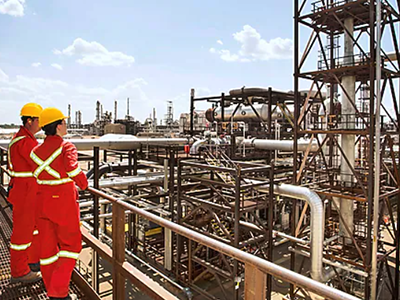
Shell proposes large-scale carbon capture and storage facility in Alberta
Mike Edwards
News carbon capture storage Shell Canada Shell Canada's current Quest site near Edmonton is a fully integrated CCS facility, designed to capture, transport and store more than a million tonnes of CO2 annually deep underground. In less than five years since its start up, Quest has captured and safely stored five million tonnes of CO2 and at a lower cost than anticipated. Quest is operated by Shell on behalf of the Athabasca Oil Sands Project and was made possible through funding for CCS from the governments of Alberta and Canada, which provided C$745 million and C$120 million of funding respectively.
Shell Canada's current Quest site near Edmonton is a fully integrated CCS facility, designed to capture, transport and store more than a million tonnes of CO2 annually deep underground. In less than five years since its start up, Quest has captured and safely stored five million tonnes of CO2 and at a lower cost than anticipated. Quest is operated by Shell on behalf of the Athabasca Oil Sands Project and was made possible through funding for CCS from the governments of Alberta and Canada, which provided C$745 million and C$120 million of funding respectively. Shell Canada of Calgary has announced a proposal to build a large-scale carbon capture and storage (CCS) project at its Scotford Complex near Edmonton. This would be a key step in transforming Scotford into one of five energy and chemicals parks for Shell around the world, providing customers with lower-carbon fuels and products into the future, such as hydrogen.
The proposed Polaris CCS project, the largest in a series of low-carbon opportunities Shell Canada is exploring at Scotford, would capture carbon dioxide (CO2) from the Shell-owned Scotford refinery and chemicals plant. The initial phase is expected to start operations around the middle of the decade, subject to a final investment decision by Shell expected in 2023. Polaris would have storage capacity of about 300 million tonnes of CO2 over the life of the project.
“Shell is making bold moves to decarbonize our operations, and wider industry, and the Polaris CCS project is the latest example,” said Susannah Pierce, Shell Canada president and country chair. “Our plans for Scotford are in line with Shell’s target to become a net-zero emissions energy business by 2050, in step with society. We are creating a world-class site that will provide customers with lower-carbon fuels, products and CO2 storage. Polaris would also make a significant contribution to Shell’s aim to have access to an additional 25 million tonnes a year of CCS capacity by 2035.”
The Polaris CCS project follows the success of the Quest CCS facility at Scotford, which has captured and safely stored more than six million tonnes of CO2 in its six years of operation. Recently, Shell has also taken a final investment decision on the Northern Lights CCS project in Norway and is part of the Porthos CCS project in the Netherlands.
“Our government is committed to developing carbon capture, utilization and storage (CCUS) to help reduce emissions and capitalize on emerging economic opportunities,” said Sonya Savage, Alberta Minister of Energy.
“Projects like Shell’s Polaris CCS show that Alberta is open for business and our oil and gas industry confidently looks to be a global player in a low-carbon future.”
The initial phase of the Polaris CCS project would capture and store approximately 750,000 tonnes a year of CO2 from the Scotford refinery and chemicals plant. It would reduce Shell’s direct and indirect emissions (Scopes 1 and 2) by up to 40% from the refinery and by up to 30% from the chemicals plant. It would also create up to 2,000 jobs.
The second phase of the Polaris CCS project involves the creation of a CO2 storage hub in Alberta, further decarbonizing Shell’s facilities and storing emissions on behalf of third-party industry sources as a trusted and reliable CO2 storage operator. Fully built, and contingent on acquiring pore space leases from the Province of Alberta, Polaris could serve as a CO2 storage hub for more than10 million tonnes of CO2 each year.
Once fully built, Polaris would contribute to the Edmonton region becoming Canada’s first hydrogen hub. In the initial phase of Polaris, CO2 captured from the refinery’s hydrogen plants would produce blue hydrogen for use in the refining process, with the potential for large-scale blue hydrogen production in future phases.
Shell is also exploring the development of additional volumes of blue and green hydrogen at Scotford that leverage Alberta’s abundance of natural gas and availability of renewable sources of power.
Print this page